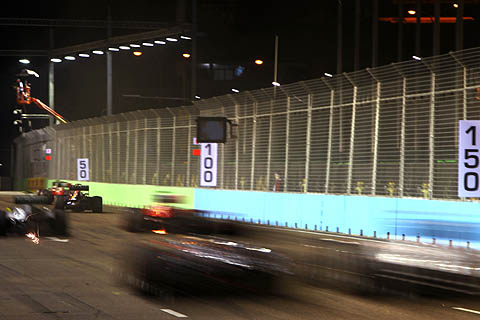


18/10/2011
NEWS STORY
 |
Last week's news that the Indian conglomerate Sahara had invested £63m ($100m) for a 42.5% stake in Force India surprised a lot of people and not only because team principal Vijay Mallya, completely truthfully, said five days earlier that he was "shocked to read a media report that I am selling the Force India Formula One team. This is completely untrue."
The headline which grabbed most media attention was the fact that it puts a £149m ($235m) valuation on the team. Surprisingly, it is even higher than the £127m (€145m) value of Williams, F1's only listed team, at its closing price on Friday of £12.70 (€14.50) per share.
The Force India investment once again raised the question of why F1 teams are worth so much. Armed with data from the teams' accounts, Pitpass' business editor Christian Sylt answers the question.
A total of 8 of the 12 teams are based in the UK meaning that they file publicly available accounts which give great detail on their finances. The most recent year with a complete set of UK team accounts is 2009 and they show that the most profitable team was Brawn which made a net profit of £98.5m. At the other end of the spectrum, Force India lost the most money by making a £40.3m net loss.
Generally, the directors of F1 teams run them to break-even (i.e they make neither a profit nor loss) which involves spending whatever is available to them. They do this in pursuit of victory on the premise that it is better to win and make no profit rather than make money and do badly on track.
Victory on track increases the value of the team which gives the owners a payout when they come to sell it. It also increases the team's ability to bring in more money from sponsorship since brands are prepared to pay more to be associated with a winning team. Whilst team owners can get a financial return from selling a team in the long run, what do they get out when it is running to break-even?
Well, if the owner is a private individual, such as Sir Frank Williams, they can take an annual salary which comes out as a cost to the team. In 2009 the team with the highest director's pay of £4.8m went to Brawn with Ross Brawn believed to have received this.
If the owner of a team is a company which sells products, such as Mercedes, Ferrari or Red Bull, the benefit they get whilst the team runs to break-even comes from television exposure of their logos on the cars. According to F1's trade guide Formula Money, Red Bull was the most exposed brand in F1 for the past two years running.
This is based on Advertising Value Equivalent (AVE) - the price the brand would have to pay to buy a similar amount of TV advertising for the exposure it got on-screen through F1. Red Bull's AVE came to an estimated £144m in 2009 and £232m in 2010 when it received almost a quarter of the total received by all the teams. It has already got exposure worth an estimated £127.8m in 2011.
In 2009 the accounts show that F1's teams had revenues of £145.2m on average with Brawn the highest, at a whopping £234.5m, and Force India the lowest at just £31.5m. According to Formula Money, around 35% of team revenue comes from sponsorship with 28% from the owners, 27% from prize money and the remaining 10% from miscellaneous sources. In 2009 the total prize money paid to the teams came to £344m ($544m) with 50% split between the top 10 and the other half divided by the teams' position in the previous year's standings. Winning the title in 2009 gave Brawn around £60m.
There were no drivers who paid to drive or got to drive by bringing sponsors to the team in 2009. However, last year there were five pay drivers, such as Vitaly Petrov, and income from all of them averaged at around £2.5m. The others were paid to drive and this averaged at £3.1m per driver rising to an estimated £25m for Fernando Alonso. After manufacturing and research and development outlay, staff pay is the second biggest cost for F1 teams and it came to £29.2m on average per team in 2009.
In a nutshell, teams receive enough money to keep going whilst the owners take a salary or get marketing exposure for their products. Teams are not designed to make a profit but to win which increases their value when they are sold. Perhaps the best example of this is looking at the shareholders' funds of Brawn GP which came to £93.2m when it won the championship in 2009, up from a deficit of £5.3m the year before.
Brawn's shareholders sold their stakes to Mercedes' owner Daimler and Abu Dhabi wealth fund Aabar in November 2009 but the recent investment in Force India couldn't be more different. Instead of paying money to the team's owners, Mallya and Michiel Mol, Sahara gave the £63m to the company which runs Force India and in return it was issued with new shares in the business.
In fact, ironically, although Mallya's shareholding in the team was reduced through the issue of the new shares, the lower amount that he now owns is actually worth more than the higher amount he held before Sahara's investment was made. The reason for this is that the team now has £63m more in its bank account than it did before Sahara invested in it.
The bottom line of all this, which has been lost in all the talk of whether Mallya sold his shares or not, is that Force India now has £63m to spend. Presumably it has a very good plan on what it is going to do with the money and that makes it an even more powerful force.